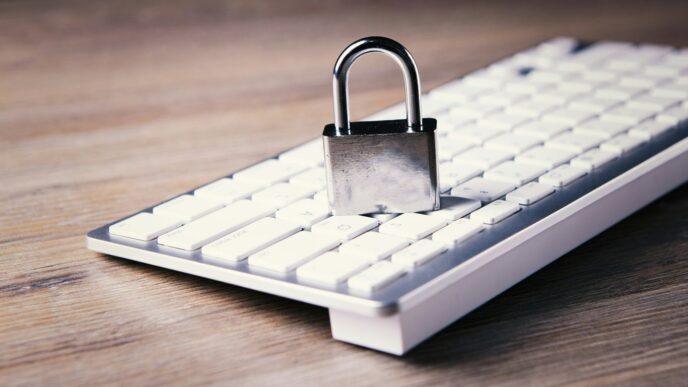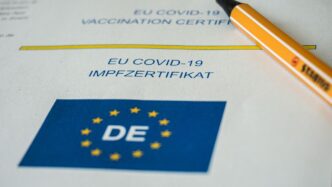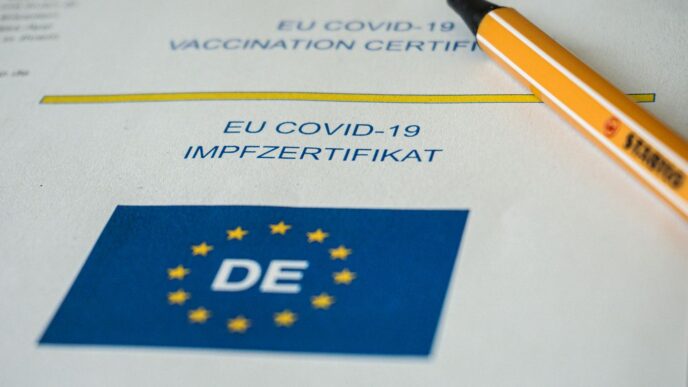Getting your company recognized as GDPR certified might sound like a big deal, and honestly, it can be. But it’s also a really smart move for any business that handles data from folks in the EU. Think of it as a stamp of approval, showing everyone you’re serious about keeping personal information safe and sound. This guide is here to break down what it all means and how you can work towards that GDPR certified status.
Key Takeaways
- Achieving GDPR certified status is a voluntary step that proves your organization’s commitment to data privacy and protection for EU residents.
- The core principles of GDPR focus on lawful, fair, and transparent data processing, limiting data use to specific purposes, keeping data accurate, and being accountable for how you handle it.
- Becoming GDPR certified involves a detailed process including data audits, establishing legal grounds for processing, securing data, and having plans for breaches.
- Understanding and respecting data subject rights, like access, correction, and deletion, is a major part of GDPR compliance and certification.
- Selecting an accredited certification body and maintaining ongoing compliance are critical for both initial certification and keeping your status valid.
Understanding GDPR Certification

So, you’re looking into getting your organization GDPR certified. It sounds official, right? Well, it is, but it’s also something you choose to do. Think of it like getting a "Good Housekeeping Seal of Approval" for your data handling practices. It’s not a law that forces you to get certified, but it’s a way to show everyone that you’re really serious about protecting people’s personal information.
What Constitutes GDPR Certification?
Basically, GDPR certification is a formal process where an independent, accredited body checks if your company’s data processing activities line up with the rules set out in the General Data Protection Regulation. It’s a way to prove, with a stamp of approval, that you’re not just saying you’re compliant, but you’ve actually got the systems and processes in place to back it up. This involves a deep dive into how you collect, store, use, and protect personal data. It’s about demonstrating that you’ve got the right policies, security measures, and procedures to respect individuals’ privacy rights.
The Voluntary Nature of GDPR Certification
It’s important to get this straight: the GDPR itself doesn’t mandate that every single company needs to get a "GDPR Certified" badge. The regulation requires you to comply with its rules, but the certification part is optional. However, choosing to get certified is a strong signal to your customers, partners, and even regulators that you’ve gone the extra mile. It’s a proactive step that builds confidence and trust, especially in a world where data privacy is a big deal. Many organizations find that pursuing certification helps them organize their internal data protection efforts more effectively.
Benefits of Achieving GDPR Certified Status
Why bother with all the effort? Well, the perks can be pretty significant. For starters, it can seriously boost your reputation. When customers know you’re certified, they feel more secure sharing their data with you. This can be a real advantage in the marketplace, setting you apart from competitors who haven’t taken that step. It also means you’re likely to have fewer data breaches, which saves you a ton of headaches and potential fines. Plus, having that certification can smooth your path when doing business in the European Union. It shows you’re a reliable partner who respects privacy laws. Think of it as a badge of honor that says, "We handle your data with care."
Foundational Principles for GDPR Compliance
So, you want to get GDPR certified? That’s great! But before we even think about audits and paperwork, we need to get the basics right. GDPR isn’t just a set of rules to tick off a list; it’s built on some core ideas about how we should handle people’s information. Getting these right makes everything else much, much easier.
Lawfulness, Fairness, and Transparency in Data Processing
This is the big one to start with. Basically, you can’t just collect and use data however you want. You need a good reason – a "lawful basis" – for processing any personal data. Think consent, a contract you have with the person, or maybe a legal obligation. And it’s not enough to just have a reason; you have to be upfront about it. People have a right to know what data you’re collecting, why you’re collecting it, and how you’ll use it. No hidden clauses or confusing language allowed. Clarity is key here. If you’re asking for consent, it needs to be freely given, specific, informed, and unambiguous. And making it easy for people to say "no" or change their mind later is just as important as making it easy for them to say "yes" initially.
Purpose Limitation and Data Minimization
Once you’ve got a reason to collect data, you can only use it for that specific reason. You can’t collect someone’s email for a newsletter and then decide to sell it to a third party later without their explicit okay. That’s purpose limitation. Then there’s data minimization. This means only collecting what you actually need. If you’re signing someone up for an event, do you really need their date of birth? Probably not. Stick to the minimum required for the job at hand. It reduces risk and shows you respect people’s privacy.
Ensuring Data Accuracy and Integrity
People’s information needs to be correct. If you have someone’s old address or a misspelled name, that’s a problem. You need processes in place to keep data accurate and up-to-date. This also ties into integrity – making sure the data isn’t tampered with or corrupted. Think about how you store data and who has access to it. Keeping it secure helps maintain its integrity.
Accountability in Data Handling
This principle means you have to be able to prove you’re following all the GDPR rules. It’s not enough to just say you’re compliant; you need to show it. This involves keeping records of your data processing activities, having clear policies, training your staff, and generally taking responsibility for the data you hold. If something goes wrong, you need to be able to demonstrate that you did everything reasonably possible to prevent it and that you have a plan to deal with it. It’s about building a culture of data protection within your organization.
Key Steps Towards GDPR Certified Status
So, you’re aiming for that GDPR Certified status. That’s a big deal, and it means you’re serious about protecting people’s data. It’s not just about ticking boxes; it’s about building trust. Let’s break down what you actually need to do to get there.
Conducting a Comprehensive Data Audit
First off, you really need to know what data you have, where it lives, and why you have it. Think of it like cleaning out your attic – you can’t organize what you don’t know you possess. This means looking at all the personal data your organization collects, processes, and stores. You’ll want to map out the data flow: where it comes from, who has access, how it’s secured, and how long you keep it. This detailed inventory is the bedrock of your entire compliance effort. It helps you spot any data you shouldn’t be holding onto or any places where it’s not properly protected. You can use a simple spreadsheet or a more specialized tool for this. The goal is clarity – no more "oh, I didn’t know we had that" moments.
Establishing Lawful Bases for Data Processing
Once you know what data you have, you need a good reason for keeping it. GDPR is pretty clear on this: you can’t just process personal data without a valid legal basis. The most common ones are consent, contract necessity, legal obligation, vital interests, public task, and legitimate interests. For consent, it has to be freely given, specific, informed, and unambiguous – no more pre-ticked boxes. You’ll need to document these bases for every type of data processing activity you undertake. This involves creating clear policies and making sure your teams understand them. It’s about being able to justify why you’re holding onto someone’s information if asked.
Implementing Robust Data Security Measures
This is where the rubber meets the road. Protecting the data you hold is non-negotiable. This isn’t just about having a firewall; it’s a multi-layered approach. Think about things like:
- Access Controls: Who can see what data? Make sure only authorized personnel have access.
- Encryption: Scramble sensitive data so it’s unreadable if it falls into the wrong hands.
- Regular Backups: Have copies of your data in case of loss or corruption.
- Secure Storage: Whether it’s physical files or digital servers, they need to be protected.
- Employee Training: Your staff are often the first line of defense. Make sure they know about phishing, password security, and safe data handling practices.
Implementing these measures helps prevent breaches and shows you’re serious about data protection. It’s a good idea to review and update these measures regularly, as threats evolve. You can find more details on how to get compliant with a GDPR compliance checklist.
Developing Data Breach Response Protocols
Even with the best security, breaches can still happen. What’s important is how you react. You need a clear plan for what to do if a data breach occurs. This plan should outline:
- How to identify and assess a breach.
- Who needs to be notified (including supervisory authorities and affected individuals, often within 72 hours).
- Steps to contain and mitigate the damage.
- How to investigate the cause and prevent future incidents.
Having a well-documented response protocol means you won’t be scrambling when the worst happens. It shows you’re prepared and can act swiftly to minimize harm to individuals and your organization. This preparedness is a key part of demonstrating your commitment to data protection.
Navigating Data Subject Rights Under GDPR
So, you’re working on getting your organization GDPR certified. That’s a big deal! One of the trickiest parts, honestly, is making sure you’re handling what the GDPR calls ‘data subject rights’ correctly. Think of it as giving people control over their own information. It’s not just a suggestion; it’s a core part of the law.
Facilitating Access and Rectification Requests
People have the right to know what data you have on them and to get a copy. This is the ‘right of access.’ So, if someone asks, ‘Hey, what personal data do you have about me?’, you need a clear process to find it, compile it, and give it to them. And it’s not just about giving them the data; they also have the ‘right to rectification.’ This means if they spot something wrong or outdated in their information, they can ask you to fix it. You can’t just ignore it. You need a system to handle these requests, check who’s asking (to make sure it’s actually them), and then provide the corrected data or confirm it’s been updated. This process needs to be straightforward for the individual and efficient for your team.
Managing Erasure and Portability Demands
Then there’s the ‘right to erasure,’ often called the ‘right to be forgotten.’ Under certain conditions, individuals can ask you to delete their personal data. It’s not always an automatic ‘yes’ – there are exceptions, like if you legally have to keep the data for a while. But you absolutely need to have a way to evaluate these requests and, if they apply, securely remove the data. On top of that, you’ve got the ‘right to data portability.’ This is where someone can ask you to provide their data in a format that they can easily transfer to another service. Think of it like moving your contacts from one phone to another. The data usually needs to be in a common, machine-readable format, like a CSV file. This means you need to be able to export data in a structured way.
Handling Objections and Withdrawal of Consent
People also have the ‘right to object’ to certain types of data processing. For example, if you’re using their data for direct marketing, they can tell you to stop. You have to respect that. Similarly, if you collected their data based on their consent, they have the ‘right to withdraw that consent’ at any time. When consent is withdrawn, you must stop processing their data for that specific purpose. This means your systems need to be able to track consent and process objections effectively. It’s all about respecting individual choices regarding their personal information.
Selecting and Engaging a Certification Body
So, you’ve done the hard work, gotten your ducks in a row with GDPR compliance, and now it’s time for the final step: getting that official certification. This isn’t just about ticking a box; it’s about picking the right partner to validate your efforts. Think of it like choosing a referee for a big game – you want someone fair, knowledgeable, and respected.
Understanding Accredited Certification Schemes
Not all certification schemes are created equal. The GDPR itself talks about "certification mechanisms" and "certification bodies." These bodies need to be approved by a national supervisory authority or an accreditation body. This approval means they’ve met certain standards and are recognized as legitimate. You’ll want to look for schemes that are recognized across the EU, not just in one country, so your certification has broader weight. Some schemes are more technical, focusing on IT products, while others take a broader look at your entire data processing setup. It’s important to find one that fits your organization’s specific needs and the type of data you handle.
Evaluating Certification Body Criteria
When you’re looking at different certification bodies, there are a few things to keep in mind. First, does the scheme cover all the GDPR requirements, or does it have gaps? You don’t want a certification that only looks at one part of your data handling. Also, consider the scope – is it for small businesses, large enterprises, or specific industries? Make sure it matches your organization. The credibility and independence of the certification body are paramount. You don’t want a situation where the company that created the rules also does the certifying, as this can lead to conflicts of interest. Look for bodies that have a clear process for audits and provide accessible documentation and training materials. Some well-known schemes include EuroPriSe, which focuses on IT products and services, and Europrivacy, which is known for its thorough approach and consideration of local laws.
The Audit and Documentation Process
Once you’ve chosen a certification body, they’ll want to see proof that you’re actually doing what you say you’re doing. This usually involves a detailed audit. You’ll need to have all your documentation ready – think policies, procedures, records of data processing activities, and evidence of how you handle data subject requests. The certification body will review this documentation and likely conduct an on-site or remote audit to verify your practices. This process can take time, sometimes several months, depending on the complexity of your organization and the chosen scheme. Be prepared to answer questions and provide further evidence if needed. It’s a thorough check, but it’s what gives the certification its real value.
Maintaining Continuous GDPR Compliance
So, you’ve gone through the whole process, gotten your GDPR certification, and feel pretty good about it. That’s awesome! But here’s the thing: GDPR isn’t a one-and-done deal. It’s more like keeping a garden weeded – you have to keep at it. Think of it as an ongoing commitment to protecting people’s data.
Ongoing Monitoring and Process Testing
This is where you really make sure things are still working as they should. It’s not enough to just set up your systems and forget about them. You need to regularly check if your security measures are actually holding up. This could mean doing things like:
- Regularly testing your data security controls: Are your firewalls still up to snuff? Is your encryption working correctly? Are access logs being reviewed?
- Reviewing your data processing activities: Are you still collecting only what you need? Are you still processing data for the reasons you originally stated?
- Running simulated data breach scenarios: This sounds a bit dramatic, but it’s a good way to see how your team would react if something actually happened. It helps iron out any kinks in your response plan before a real emergency.
Documenting Compliance Activities
Keep records of everything you do related to GDPR. Seriously, everything. This isn’t just busywork; it’s your proof that you’re serious about compliance. You’ll want to keep track of:
- Records of consent: Who agreed to what, and when? Make sure this is easy to find.
- Data subject requests: Every time someone asks for their data, wants it changed, or wants it deleted, log it. Note when the request came in and when you responded.
- Training records: Who has been trained on data protection, and when?
- Data Protection Impact Assessments (DPIAs): If you’ve done any, keep those reports handy.
This documentation is super important, especially if a data protection authority ever comes knocking. It shows you’re organized and taking your responsibilities seriously.
Preparing for Recertification
Remember that GDPR certification usually has an expiry date – often three years. So, well before that date rolls around, you need to start thinking about getting recertified. This means going back through much of the same process you did the first time. You’ll need to:
- Review any changes in your data processing: Have you started collecting new types of data? Are you using new technologies?
- Update your documentation: Make sure all your records are current.
- Conduct internal audits: Get a head start on identifying any areas that might be weak before the external auditors arrive.
Staying compliant isn’t just about passing a test once; it’s about building a culture of data protection within your organization. It takes effort, but it’s totally worth it for the trust it builds with your customers and the protection it offers.
Wrapping Up Your GDPR Journey
So, getting GDPR certified might seem like a lot, and honestly, it is. It takes time and effort to really get your data handling in order. But think about it – it’s not just about avoiding trouble with fines. It’s about showing people you care about their privacy, which is a pretty big deal these days. Plus, having those solid data protection practices in place makes your business run smoother and keeps you ready for whatever new rules come down the line. It’s a smart move for building trust and keeping your business on the right track.
Frequently Asked Questions
What exactly is GDPR certification?
Think of GDPR certification as a special badge that shows your company is really good at protecting people’s private information, following all the rules set by the European Union. It’s not something you *have* to get, but it’s a great way to prove to everyone that you take data privacy seriously. It means you’ve been checked and approved by experts who know all about GDPR.
Do I really need to get GDPR certified?
Getting GDPR certified is optional, kind of like choosing to get an ‘A+’ on a test instead of just passing. While you don’t *have* to be certified to follow GDPR rules, it’s a fantastic way to show customers and partners that you’re a trustworthy company. It can help you do business more easily in Europe and build stronger relationships with people whose data you handle.
How long does it take to get GDPR certified?
The time it takes can vary a lot. For smaller businesses with simpler ways of handling data, it might take less than half a year. But for bigger companies with lots of complex data processes, it could take a year or even longer. It really depends on how organized your data practices already are and how much work is needed to get them fully compliant.
What are the biggest benefits of being GDPR certified?
Being certified is like getting a gold star for data protection. It helps you gain the trust of your customers, which is super important these days. It also makes it easier to work with companies in the EU and can even help you avoid big fines if something goes wrong. Plus, it shows you’re ahead of the curve when it comes to privacy, which is a big deal in today’s world.
What’s the difference between being GDPR compliant and GDPR certified?
Being ‘compliant’ means you’re following all the GDPR rules in your day-to-day work. ‘Certified’ means you’ve gone through an official process with a special organization that has checked your work and given you a certificate saying you’re doing a great job. Certification is a formal way to prove your compliance.
How do I choose the right organization to help me get certified?
You’ll want to find an organization that is officially recognized to give GDPR certifications. Look for one that has clear rules, covers all the important GDPR requirements, and is known in the areas where you do business. It’s also good if they offer support and resources to help you through the process, making sure you understand everything and have what you need to succeed.














